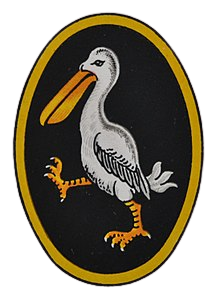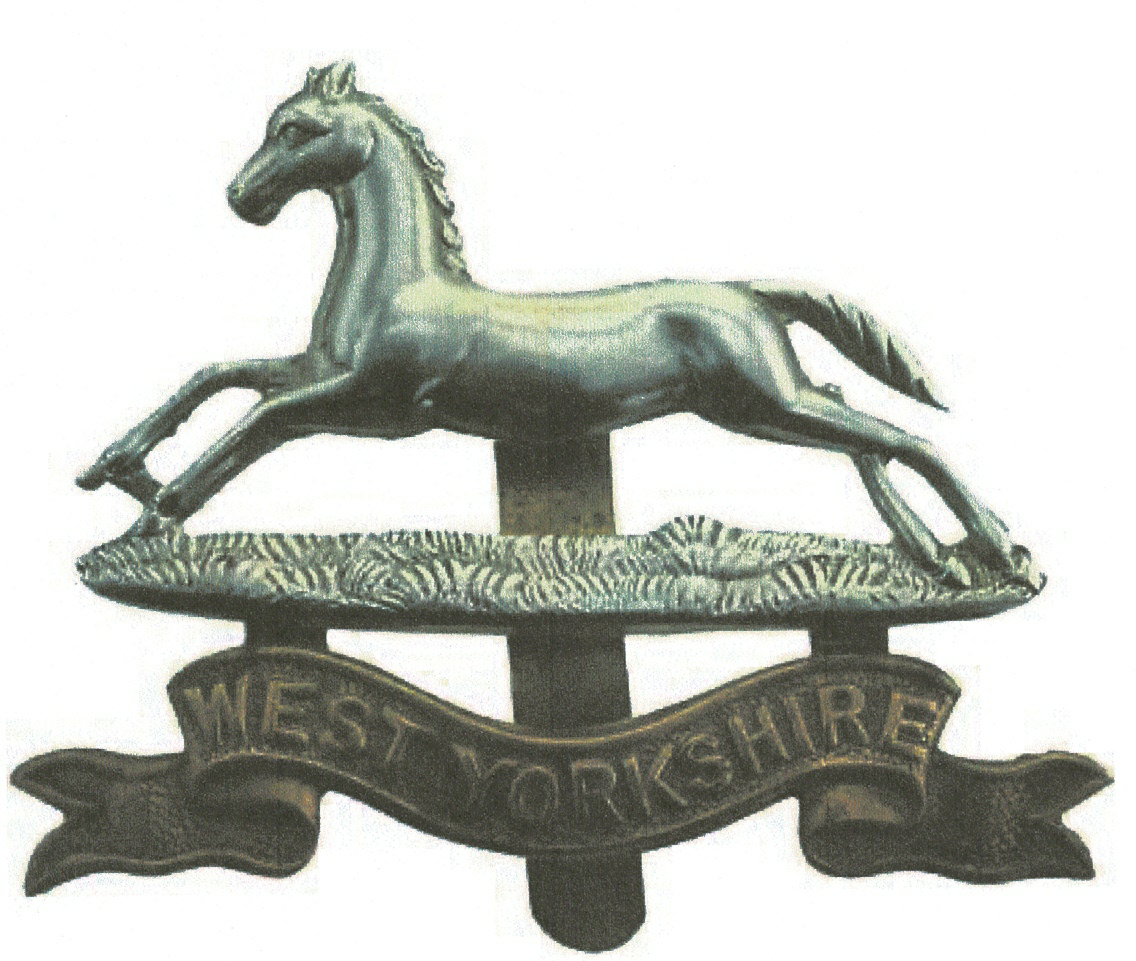

77053 Private Joseph Downes
2nd/5th (Territorial) Battalion
Prince of Wale's Own
(West Yorkshire Regiment)
185th (2nd/1st West Riding) Brigade
62nd (2nd West Riding) Division
This file last updated 5 August, 2021 17:42
Introduction
Photograph here, if available
Military information is from Craven's Part In The Great War, British National Archives The Long, Long Trail with family information from Michael William Downs & Clive Mitchell-Taylor, supplemented with inspired guesswork.
Joseph Downs was born in YORKSHIRE in 1886, the son of William Downs and Elizabeth, née Clarkson. William was born at HAMSTHWAITE and Elizabeth at CLINT.
His siblings are boys Thomas and Stephen, together with sisters Eva, Edith and Hilda. There is another child in the family but as yet we are unable to provide any detail.
Joseph marries Sarah Hannah and has a child Wilfread.
There is much more information on soldiers who died as a result of the war and sometimes on those who were wounded, but no further information on Joseph has been located to this point. Many WW1 records were destroyed by fire during WW2.
The battalion was raised at YORK on 28 Sep 1914 and on 1 Mar 1915 moved to MATLOCK to join the 185th Brigade, 62nd (2nd West Riding) Division. In May they moved to THORESBY PARK and in October 1915 to RETFORD, November to NEWCASTLE, January 1916 they moved to SALISBURY PLAIN. In June 1916 to SOMERLEYTON near LOWESTOFT then in October 1916 to BEDFORD. On 5 Jan 1917 t hey proceeded toFRANCE, sailing from SOUTHAMPTON to LE HAVRE.
Their training was heavily disrupted and extended by a shortage of equipment and the need to reinforce the battalions in FRANCE.
The battalion first saw action on the ANCRE in February 1918, and went on to take part in many major actions, including the ARRAS OFFENSIVE, the HINDENBURGH LINE and at CAMBRAI in 1917. On the SOMME, ARRAS, HINDENBURGE LINE and the final advance to PICARDY in 1918. On 2 Jun 1918 the unit was relieved by the 2nd/5th Yorkshire Regiment and was disbanded in France 13 Aug 1918
Relatives Who Served in WW1
Brother Thomas Downes served with the 2nd/6th Duke of Wellington's West Riding Regiment and was WIA, DOW
Brother Stephen Downes served in the AIF , married Rosa Houseman in Stockton NSW in 1919. He served with the 19th Battalion on Gallipoli, reassigned to the 8th Field Company Engineers and was WIA in 1917 and repatriated to Australia.
Brother-in-law Walter Houseman served with the 1st/8th Battalion Durham Light Infantry and was KIA.
Brother-in-law George Houseman served with the 1st/5th Battalion Duke of Wales' Own, West Yorkshire Regiment and was WIA.
Brother-in-law Thomas Edward Inman, husband of his sister served with the 1st Battalion, Prince of Wales' Own, West Yorkshire Regiment and was KIA.
This record prepared by Clive Mitchell-Taylor grand-nephew of Tom Downs, based upon records obtained from Craven's Part In The Great War. together with family information from Tom's grandson Michael William Downs and Clive. The layout has been altered to accord with the records on this site.
Awards and Decorations
-
Private Joseph Downes is entitled to wear the British War Medal and Victory Medal, but not the 1914-15 Star.
See his Medal Roll entry which is at the top right of the
6-card document from British Archives.
1914-15 Star
[Extract from Ribbons and Medals: Naval, Military, Air Force and Civil, Captain H. Taprell Dorling, DSO RN,
George Philip & Son, 33 Fleet Street, London EC4, 1940]

The decoration consists of a four-pointed star in bright bronze as shown, with the date 1914-15 on the central scroll. The reverse is plain, and is stamped with the name and unit of the recipient. The ribbon is red, white and blue, shaded and watered, worn with the red nearest the centre of the breast. It is atached to the medal through a ring.
It is similar in shape and description to the 1914 Star, to which few, if any, Australians were entitled.
The decoration, sanctioned in 1918, was issued "to all officers, warrant officers, non-commissioned officers and men of the British, Dominion, Colonial and Indian Forces, including civilian medical practitioners, nursing sisters, nurses and others eployed with military hospitals, who actually served on the establishment of a unit in a theatre of war as defined in Appendix 'A'. Individuals in possession of the 1914 Star will not be eligible for the award of this decoration."
Appendix 'A' included the Western, Eastern, Egyptian, African, Asiatic and Australasian Theatres of war, with commencement dates individual to countries and campaigns.
British War Medal 1914-20
[Extract from Ribbons and Medals: Naval, Military, Air Force and Civil, Captain H. Taprell Dorling, DSO RN,
George Philip & Son, 33 Fleet Street, London EC4, 1940]

This medal was approved by King George V in 1919 to record the bringing of the war to a successful conclusion and the arduous services rendered by His Majesty's Forces.
The medal, which is supended from its ribbon by means of a straight clasp, without swivel, bears on the obverse the effigy of His Majesty - exactly similar to that on a half-crown - with the legend 'Georgivus V : Omn : Rex et Ind : Imp'.
The reverse bears a design which represents St George on horseback, trampling underfoot the eagle shield of the central powers and a skull and crossbones, the emblems of death. Overhead is the risen sun of victory. The male figure, rather than a symbolical female one, was chosen because man had borne the brunt of the fighting. The figure was mounted on horseback as symbolical of man's mind controlling force (represented by the horse) of far greater strength than his own. The design is thus also symbolical of the mechanical and scientific appliances which helped so largely to win the war.
The ribbon has a orange watered centre with stripes of white and black at each side and with borders of royal blue. It is stated that the colours have no particular signification.
Victory Medal
[Extract from Ribbons and Medals: Naval, Military, Air Force and Civil, Captain H. Taprell Dorling, DSO RN,
George Philip & Son, 33 Fleet Street, London EC4, 1940]

This medal, of bronze, bears on the obverse a winged figure of Victory, full length in the middle of the medal and full face; the borders and the backgound plain, without either incription or date. On the reverse is an inscription. "The Great War for Civilization." and either the names of the different Allied and Associated Powers, or their coats of arms.
The rim is plain, and the medal hangs from a ring. The ribbon is red in the centre, with green and violet on either side shaded to form the colours of two rainbows.
It has also been approved that any officer or man who has been "mentioned in despatches" shall wear a small bronze oak leaf on the ribbon of this medal. Only one oak leaf is so worn, no matter how many "mentions" the wearer may have received.
The medal is designed to obviate the exchange of Allied Commemorative war medals, and is issued only to those who actually served on the establishment of a unit or ship in a theatre of war. [This is an important distinction, as those Australians who served only in Australia, or only in Australia and England, were not entitled to the award.]